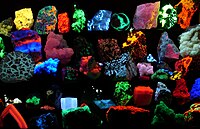
Photo from wikipedia
Abstract Reaction-based fluorescent sensor (L) based upon a conjugated benzothiazol structure was synthesized and used for detection of bisulfite (HSO3−) in water. L displayed large change in both fluorescence and… Click to show full abstract
Abstract Reaction-based fluorescent sensor (L) based upon a conjugated benzothiazol structure was synthesized and used for detection of bisulfite (HSO3−) in water. L displayed large change in both fluorescence and absorption spectra immediately after the addition of HSO3−. It can be easily observed about the fading of the solution’s color through the naked eye. The HSO3− underwent a 1,4-addition reaction with the C-4 atom in the ethylene group. The detection limit of L for HSO3− was measured to be 0.45 μmol/L. The live cell fluorescent experiments proved the potential application of the L in tracing the HSO3− in future biological systems.
Journal Title: Materials Chemistry and Physics
Year Published: 2018
Link to full text (if available)
Share on Social Media: Sign Up to like & get
recommendations!